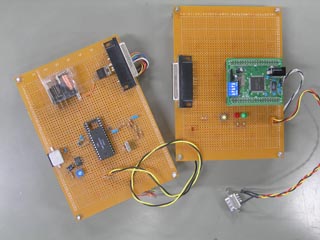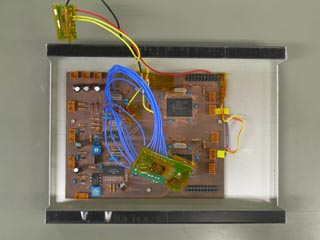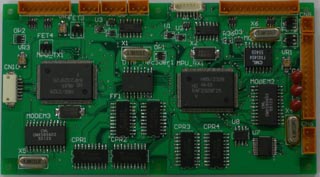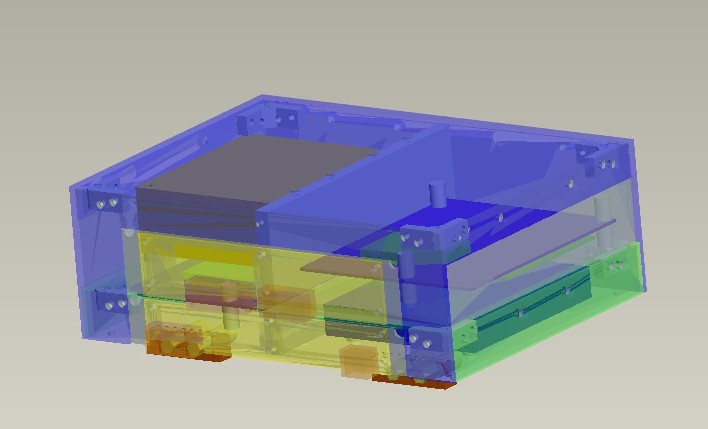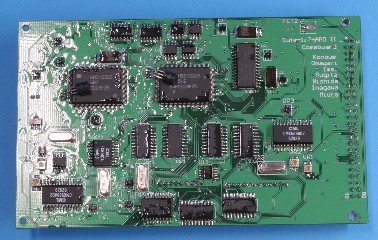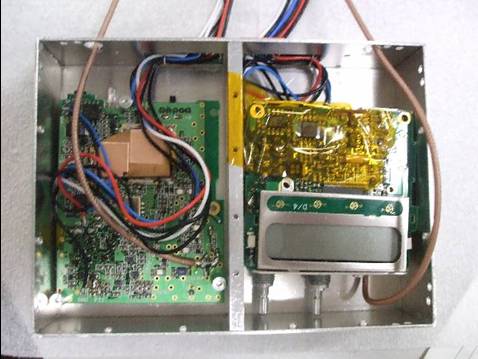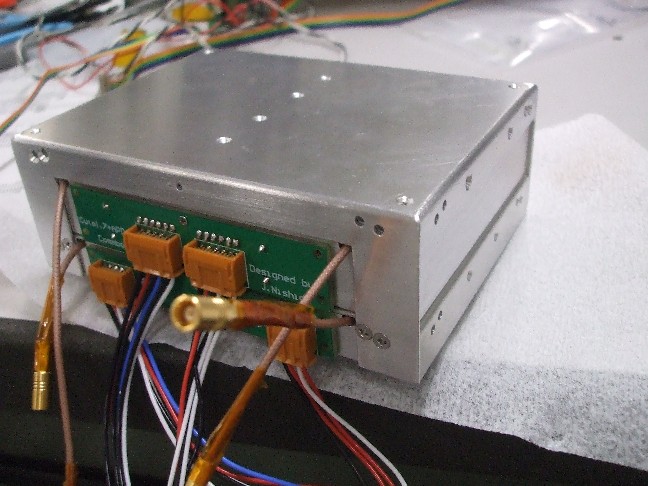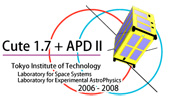



The most important role of the Communication subsystem , which is one of the most important subsystems in the satellite , is to communicate with groud station and to transmit / receive the data .
Cute1.7+APD , launched in Feb. 2006 , had been operated for about a month and its basic function showed actual performance in the orbit .
It communicated by GMSK modulate system for the first time in Japanese cubesat ,and we received reception report from all arround the world.
As in the case of Cute1.7 ,Cute1.7+APD II uses amateur 144MHz and amateur 1200MHz frequency for the ground
to the satellite link, and uses 430MHz band for the satellite to the ground
link. The satellite is an amateur satellite whose frequency was coordinated
by International Amateur Radio Union (IARU), and was licensed by the Ministry
of Internal Affairs and Communications in Japan.
It is controlled from the operation center at Tokyo Institute of Technology "JQ1YCZ"
in Tokyo, Japan. Cute-1.7 + APD II amateur missions are based on the experience
of amateur satellite operation in CUTE-I and Cute1.7 , and are developed with radio amateurs all arround the world . The objectives of
communication subsystem in the satellite are as follows.
1. To create a higher functioned amateur satellite using new designed methodology for micro/pico satellites
2. To share radio experiment opportunities with radio and
satellite amateurs
To receive the telemetry and use digital repeater function , please check Cute-1.7 II
Amateur services.
Cute-1.7 + APD II communication subsystem has following functions,
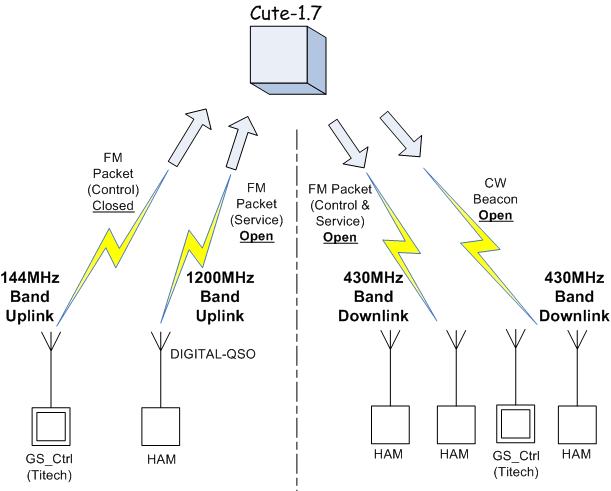
Cute-1.7+APD II has following transceivers
4 transceivers are equipped
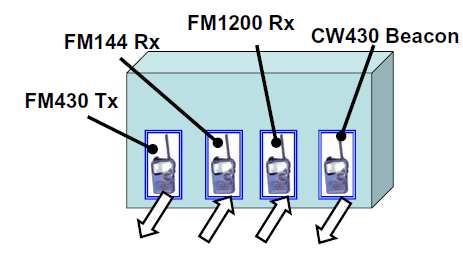
| Frequency (MHz) |
Moduration | Protocol | Transceivers | Power (mW) |
Consumption (mW) |
|
| Command | 144MHz | AFSK 1200bps / GMSK 9600bps, DTMF | AX.25/SRLL, DTMF | DJ-C5 (ALINCO) |
?? | |
| Uplink (Digipeater) |
1200MHz 1267.6MHz |
GMSK 9600bps | AX.25/SRLL | TH-59 (KENWOOD) |
?? | |
| Telemetry | 430MHz 437.475MHz |
AFSK 1200bps / GMSK 9600bps | AX.25/SRLL | DJ-C5 (ALINCO) |
300 | ??(MAX) |
| Beacon | 430MHz 437.275MHz |
CW | CW | (INVAX) |
100 | ??(MAX) |

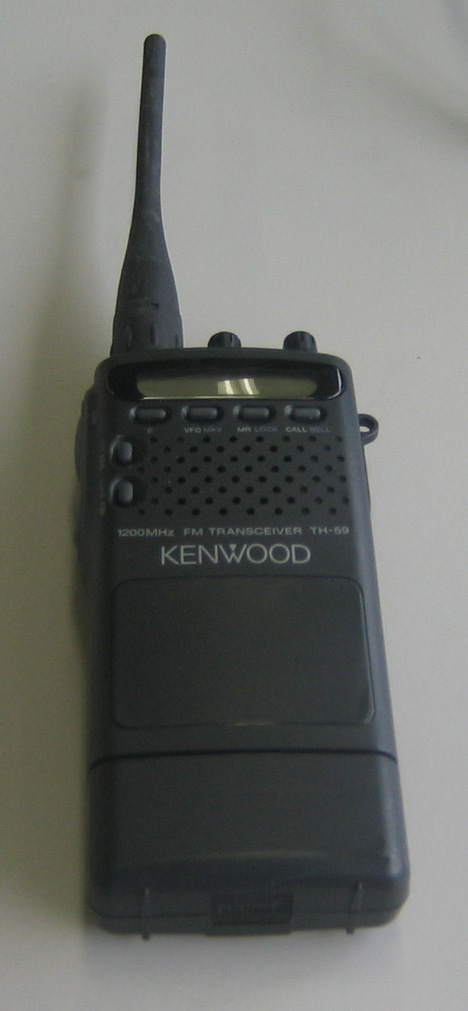
Four of the Cute-1.7 + APD II antennas are all monopole antennas , which showed actual performance in CUTE-I and Cute 1.7 . Amprifier is used for 1200MHz receiver to make communication stable . Antennas are made of steal tape(0.2mm thickness, 3mm width) covered by PTFE. While the satellite is in the rocket, antennas are coiled. They will be deployed after the satellite is separated from the rocket.
Communication controller handles packet assembling and disassembling.
Controller has 2 micro-computers, one of them handles the data transmission,
and the other handles received data. They are connected by RS-232 serial
line. Because the MPU can handle only serial communication, USB-serial converter is used to communicate with PDA .
And also, MPU of communication sysytem and APD unit are directly connected
by serial line in order to conduct APD science mission if PDA don't
work. Micro-computer is H8S/2328 FlashROM type, which has 128kB ROM and
8kB RAM, and was tested by Gamma-ray radiation.
If PDA don't work in the orbit, micro-computers in the Communication subsystems would control the whole satellite.
The development team has considered what service using amateur radio would be fun and interesting for both amateurs and universities. The team has discussed with Japanese radio amateurs from its early stage of development. Cute-1.7 + APD II provides digipeater service to all amateurs in the world.
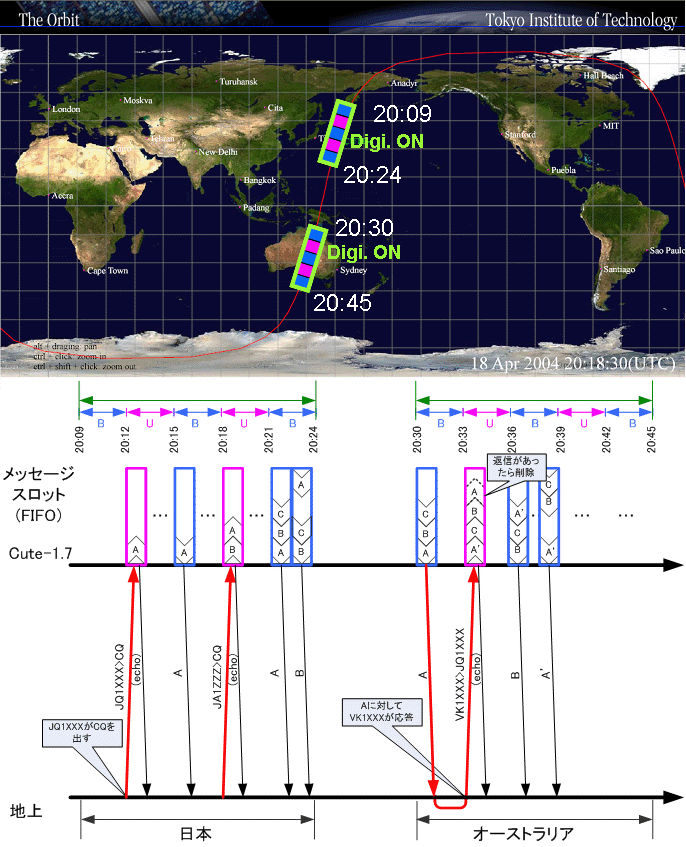
This is the image of Cute Digipeater operation. The satellite has 2 modes,
which are "Multi-cast mode" and "Uplink mode". Cute-1.7
+ APD II is usually operated in Multicast mode. All registered messages will be
sent sequentially. Anyone who has Cute-1.7 + APD II telemetry decodable radio
transceiver can listen these messages. In Uplink mode, 1200MHz-band receiver for
Cute Digipeater mission is ready to accept your message to register. When
Cute-1.7 + APD II accept your message, satellite will reply acknowledgement signal
imediately in 437MHz telemetry link. Anyone can listern this reply signal.
Detailed information, please see amateur
service section.
